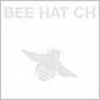Beehatch, "Brood"
 Brood is the second album born from a fruitful collaboration between Phil Western and Mark Spybey, who, until this project was hatched, hadn't worked together since their shared time in Download. Fans of that electronic supergroup will find much to enjoy with the music presented here, though it certainly isn't a rehash. Tightly sequenced psychedelia and ritualistic rhythms meet with brooding, subsurface vocals and a sound palette that ranges from far Eastern inflections to the claustrophobically industrial.
Brood is the second album born from a fruitful collaboration between Phil Western and Mark Spybey, who, until this project was hatched, hadn't worked together since their shared time in Download. Fans of that electronic supergroup will find much to enjoy with the music presented here, though it certainly isn't a rehash. Tightly sequenced psychedelia and ritualistic rhythms meet with brooding, subsurface vocals and a sound palette that ranges from far Eastern inflections to the claustrophobically industrial.
In some cases musical projects where the musicians exchange sounds through the mail or over the Internet are lacking in a feeling of immediacy; not so with Beehatch. The sense of organic development within these songs is quite palpable. These artists are so at home in the studio, their mere separation by an ocean becomes irrelevant. Connecting over the fiber optic, joined together in a union of the third mind, they forge seamless electronic soundscapes despite the physical distance separating them.
“Edison Medicine” opens the disc in a surrealistic bubble bath of inane mechanical rumbling, hiss and slurred voices that eventually give way to the bright melodic arpeggiations of “I Forgot to Mention,” a piece that ebbs, swirls, and flows like insect swarms watched from a distance. “Du Du Horn” is a short piece in which a voice says, “we dream together,” ushering us into a cyclonic fanfare of regurgitated horns, twittering drums, and partially digested voices. The overall mood of these songs is one of darkness: the kind conducive to a bad psychedelic trip. Snippets of ecstatic beats, showing hints of pop sensibility, emerge briefly here and there, only to disappear moments later, leaving an unsettled feeling of dislocation in their wake, an experience intensified when listening on headphones.
Joining forces, Mark Spybey and Phil Western have created a psychotronic world of alternately menacing and amusing surreality. This is partially due to the density of layers contained within each song, stacking sound on top of sound. A dozen or more listens on and I’m still noticing new things: subtly attenuated pieces of broken melody, the spacey oscillations of mutant synthesizers, havoc wreaked with warble and buzz, samples that might have otherwise decayed if they hadn’t been given a place to live. This is the albums strength.
samples:



